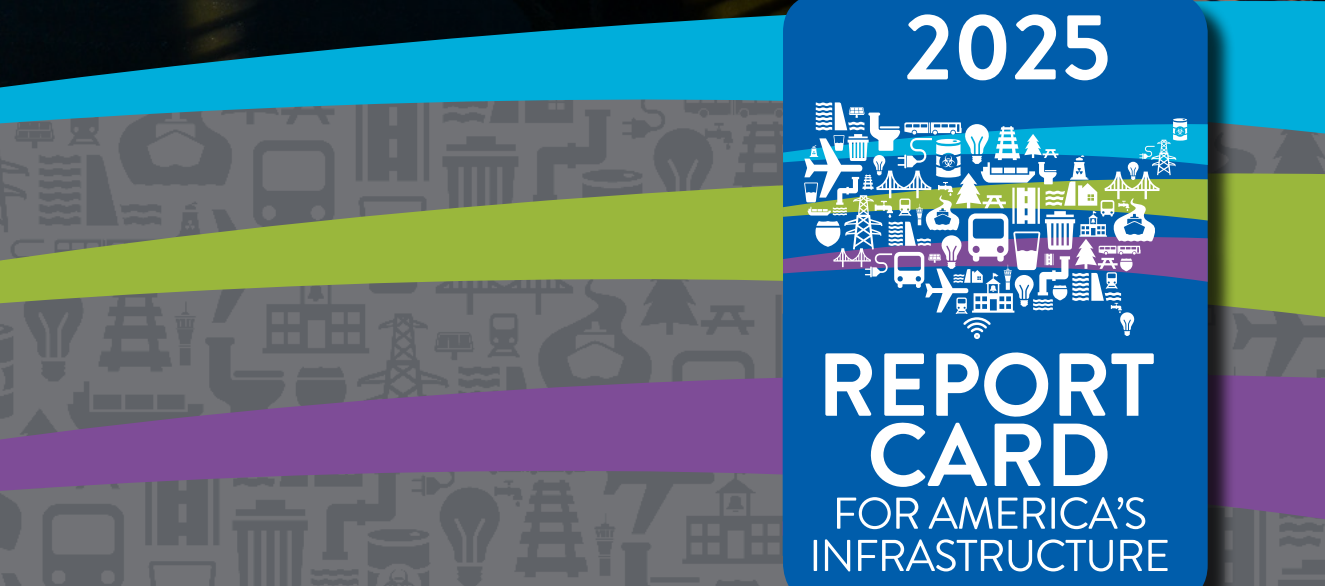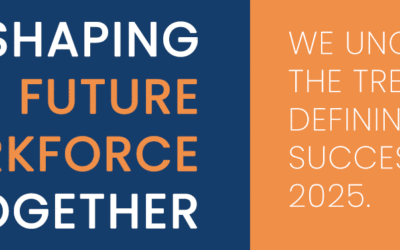
The American Society of Civil Engineers has released its latest report card on United States infrastructure and Endeavor teams are all over it. Two main themes emerge from the ASCE’s work, which it publishes every four years: On the one hand, the group’s overall ‘C-‘ grade is its best since launching the report card 27 years ago and 16 of its 18 categories either rose or held their ground from 2021.
The ASCE points very specifically to investments from the Infrastructure and Jobs Act have begun paying off: “We have seen the difference investment can make in improving infrastructure,” Feniosky Peña-Mora, the 2025 president of the ASCE, said in a statement.
The flip side: The infrastructure funding gap now stands at roughly $3.7 trillion, an increase of about $1.1 trillion from four years ago. Building on the IIJA and other initiatives is key to lifting the grades on future report cards.
Said Darren Olson, chair of the 2025 Report Card: “More must be done. Failing to close the infrastructure investment gap brings serious economic consequences. Each American household currently loses $2,700 per year due to poor infrastructure. If we continue our current federal investment levels, we can reduce that number to close to $2,000 per year.”
Endeavor editors have dug deep on the grades ASCE’s researchers gave various sectors and the factors driving those. Here’s a roundup:
Roads and bridges – “Better, but” sums up the grades the ASCE has given the country’s roads and bridges—‘D+’ and ‘C,’ respectively. Gavin Jenkins writes for Roads & Bridges that fewer major roads are deemed to be in poor or mediocre condition—the IIJA can claim some of the credit there—but that that number is still high at 39%. The state of bridges and their funding needs point to the broader theme that much more cash is needed—and quickly: Stimulus programs have directed $40 billion to bridges but overall needs are estimated to top $190 billion.
See also: Jenkins’ conversation with Rocky Moretti on nonprofit group TRIP, which furnished the ASCE with some of the report card data
Drinking water – The nation’s drinking water infrastructure needs $150 billion more funding over the next two decades than it did in 2018, says the EPA—which is one of the reasons the ASCE’s grade for the sector has stayed at ‘C-.’ But Alex Cossin writes for WaterWorld that more widespread use of technology and better asset management are helping utilities in their quest to upgrade their operations.
In addition, past ASCE President Greg DiLoreto breaks down the grade for WaterWorld as well as how the sector can lift it.
Stormwater – Writing about the stormwater sector’s ‘D’ grade—also the same as in 2021—Katie Johns at Stormwater Solutions notes commentary from industry leaders about the trend toward more complete data collection and the need for strong regional coordination.
Wastewater – When it comes to wastewater management, “decades of underinvestment and rates lower than the actual cost of operating the utility” have hamstrung water utilities’ efforts to improve the ‘D+’ grade the ASCE has given their infrastructure. Only about 30% of capital needs are being met, experts say.
How to set about improving that grade? Olson, the report card’s chair, talks about resilience and rate-setting.
See also: Reactions from various water trades associations to the report’s findings and recommendations. A thread running through them: The public and private sector need to work together more effectively.
And have a listen to the Talking Under Water podcast, where several editors dig further into the details of the report.
Ports and freight rail – U.S. ports scored a ‘B’ from the ASCE, thanks in part to a recent step up in federal investment for planning facilities’ waterside and landside needs. Freight rail infrastructure, meanwhile, has received a ‘B-’ grade, down a tick from 2021. The team at Material Handling & Logistics notes that both categories are becoming particularly susceptible to extreme weather events.
Public transit – The grade for public transportation infrastructure has moved to a ‘D’ from 2021’s ‘D-’ thanks to both the IIJA and Inflation Reduction Act—with the former being particularly important as transit agencies sought to recover from the pandemic plunge in ridership. But Megan Perrero writes for Mass Transit that officials say doubts about viable financing options remain even though operating costs are climbing. That has contributed to a funding gap of $152 billion between now and 2033.
Energy – When it comes to eye-popping dollar figures, the energy sector might take the cake: Rod Walton writes for EnergyTech that “energy generation and delivery will require at least $1.89 trillion of near-term future investment to reach a healthy state of repair.” Rapid demand growth is exacerbating the situation, which is why the ASCE has given the nation’s energy infrastructure a ‘D+’ grade this year, down from ‘C-‘ in 2021. One key to improvement here, says the ASCE, is streamlining regulatory reviews.
Aviation – The nation’s aviation infrastructure, which the ASCE gave a ‘D+’ grade, faces many of the same funding needs and growth projections as that of other sectors listed here. But, writes Emily Gorski for AviationPros, workforce issues around air-traffic controllers as well as maintenance and operations personnel have risen in importance, society leaders said.
Digging deeper, AviationPros also talked to Kevin Burke, president and CEO of the Airports Council International-North America about the ‘D+’ and the impact to date of the Bipartisan Infrastructure Law.
Broadband – New to the 2025 report card is broadband infrastructure, “a system of systems” that has received a ‘C+’ grade. Sean Buckley writes for Lightwave that the ASCE team noted current funding levels of the BEAD program will improve the reach of broadband service but also flagged recent cost increases of more than 10%.
Public schools – The ASCE says public school infrastructure remains a middling-at-best student: For the third report in a row, the group has given the country’s public schools a ‘D-’ for their infrastructure and says education leaders should put more money toward maintenance than to new construction. Writing for American School & University, Mike Kennedy takes note of the sector’s growing funding gap and the report saying that only 10% of total spending is going to facility expenses.
And to wrap up: For a broad look at the report card’s findings, you can check out this EC&M story. If you’d like to look over the ASCE’s research, its landing page is here.





